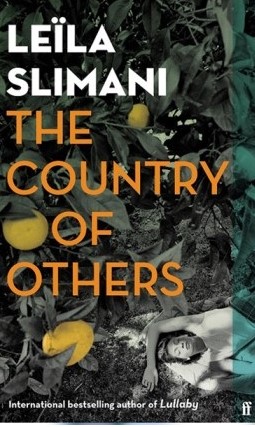
The book was presented by Pat.
The author’s main concern is exploring the links between Fiction, History, and Memory. There was much she doesn’t know about her family’s lives, so creating characters was a way for her to come to terms with her own past. She claims that “Literature can bring you to complexity.”
One of the questions Pat raised was the closeness of fiction to reality. To what extent are the events in the novel invented? The historical context of the novel is recognisable: the Second World War in which Amine is a “spahi” fighting in France (like Slimani’s maternal grandfather) and also the Moroccan nationalism movement that struggled to end the French protectorate. Is the sense of confusion about the history of events—the refusal to explain the causes and effects in a clear manner—wished? The discussion revealed that while readers were sometimes unsure about the historical basis of events in the novel, the lack of clarity could be explained by the fact that they are often represented from a child’s perspective or from the perspective of characters who are submitted to the violence rather than engaged in it.
We discussed some of the characters. Amine was a person who made sense to readers—his mixture of pride and shame in regard to his French wife was believable as well as representative of the complexity that Slimani was aiming for. Some found the character of Mathilde more difficult to understand. Were her sexual fantasies about rape during the air raids believable? Some thought not, while others found them a credible escape response to the violence of the bombings. Her fear of violence sparks her hyper sexuality; masturbation becomes a way of sublimating the threat of destruction. Pat pointed out that Slimani’s first book, Le Jardin de l’ogre, is about sexual addiction, so Mathilde is written in that vein.
Was Mathilde and Amine’s relationship credible? We agreed that the time and place made it was possible for them to come together. They were attracted by the difference each one represented. Does Amine understand that his attraction is based on the power relations of the subaltern male? Mathilde represents colonial power and seducing her is a way to gain ascendance. She is attracted to his difference from the men she knows. Their attraction has elements of idealisation and projected exoticism. Readers admired the treatment of the complex and intertwining hierarchies of class, race and nationality.
We agreed that the book is a compelling exploration of culture shock in describing Mathilde’s fascination and disgust with her new surroundings. Her response in lying about Morocco in her letters home, creating a romanticised picture of her life, is credible.
There was a discussion of sexual politics in the novel. The account of domestic abuse made for disturbing reading. But this is not exclusive to Morocco—in the novel, the women of Alsace also have problems with men. For example, Mathilde’s father is portrayed as a philandering alcoholic. The critique of the patriarchal system is damning.
Some readers objected to the thinness of peripheral characters like Moad or Selma. Pat pointed out that some of the peripheral characters are developed in the rest of Slimani’s trilogy. We found Moad an interesting character, both hyper-masculine and yet obviously attracted to Amine. His repressed homosexuality is delicately evoked.
Dragan, the Jewish Moroccan doctor, is a character who demonstrates the complexity of Moroccan society. Slimani understands the various forms of otherness at work. She explores the cultural barrier that arises from his work as a gynaecologist. This permits a critique of patriarchal society. It’s ironic that the doctor can’t have children. He invests in growing oranges and this permits a friendship with Amine and family. We discussed the grafting of both oranges and lemons onto the same tree. Is it horticulturally conceivable? We thought so, but the fact that the fruit is described as bitter suggests that it’s to be read as a metaphor. It could be an image of Mathilde.
We then considered whether the representation of métissage was positive or no? Aisha is both and clearly reconciling two different cultural attachments can be difficult.
There was some discussion of the handling of the child’s point of view. As a child of mixed parentage, Aïcha was bullied at her Catholic school. At home she was not really seen or understood. She has to make herself small and invisible, and yet she is obviously talented. Her attraction to Catholicism might seem surprising, but readers found different reasons for its believability. One explanation is that she enjoys success in school. There the rules make sense and she can thrive intellectually. The benevolent attitude of Sister Marie-Solange makes school a safe place for her. We discussed in detail the scene where Aïcha stabs her classmate in the neck with a compass. The explanation is that she is curious to see whether the plump classmate will deflate if punctured. This is explainable as the logic of child, but it also suggests Aïcha’s alienation. She does not see her classmates as quite like her, since they shun and humiliate her.
We agreed that the descriptions of the country were impressive.There were evocations of the beauty of the landscape and the inhabitants love of the land.
Some felt that the novel ended too abruptly. Others didn’t mind the open-endedness. In any case, there is a sequel for those who want to follow the characters further.

